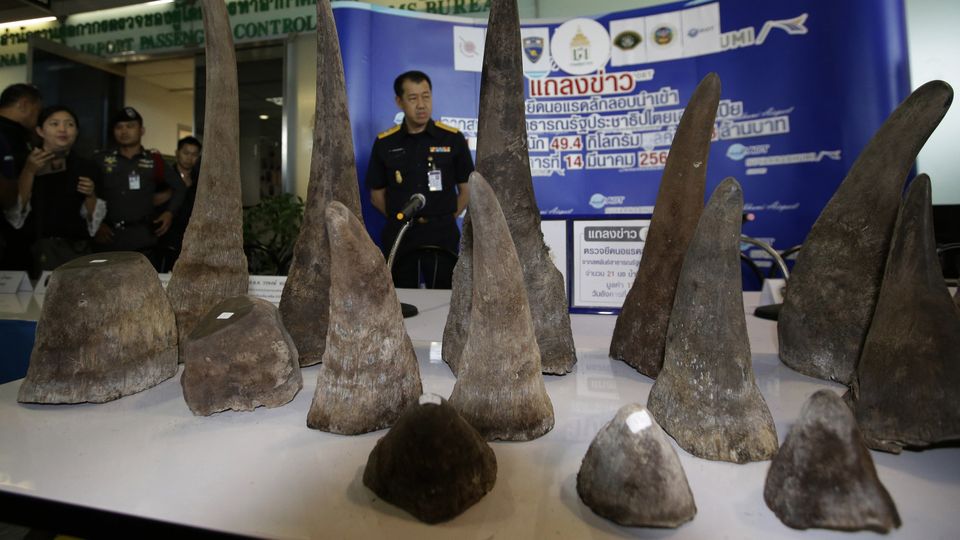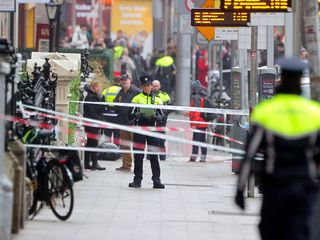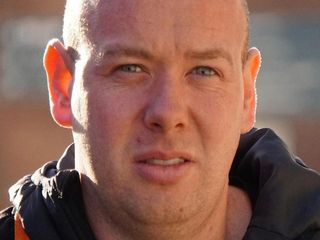- Home >
- Crime >
- Irish Crime
How Rathkeale's 'Dead Zoo' gang made a fortune from the Rhino horn trade - Part One
In this week's special investigation, the Sunday World looks at how a Limerick gang became wealthy selling animal parts to Chinese medicine dealers
The Dead Zoo is the name the famous Dublin 'wits' came up with for the Natural History Museum in the capital.
The quirky Victorian-era institution is packed with stuffed exotic animals from around the world - a moose, a hippo, a giraffe, a rhinoceros and a lot more.
The Dead Zoo Gang is the name the Sunday World gave the Irish criminals who started buying or stealing rhino horns all over the world.
From the Rockies in Denver, Colorado, to auction rooms in Sydney, Australia, the gang spent more than a decade supplying the illegal trade in rhino horns.
With buyers in China and Vietnam willing to spend €20,000 and more per kilo, the Irish mob found a way to go big-game hunting without using guns.
Read more
This is the story of the Dead Zoo Gang and one of the world's most bizarre crime sprees.
The key members of the gang come from a community known as the Rathkeale Rovers. The nomadic business families take the name from the Co. Limerick town they call their spiritual home - where they marry, have christenings and bury their dead.
Many spend 11 months of the year on the road, ranging all over Europe, buying and selling whatever turns a profit. Some are involved in the bogus tarmac trade, ripping off unsuspecting householders who are talked into a bargain that always turns out to be too good to be true.
Photo taken at The Natural History Museum, Merrion Street, Dublin
The tarmac trade brings the rogue businessmen on to every highway and byway as they hunt down customers and discreet campsites.
It has provided plenty of scope for those with the knowledge to look out for antiques at bargain prices. The antiques trade has always offered the chance of a quick profit.
Classic items will always sell and hold most of their value, but for the small-time trader it pays well to get into the market ahead of the latest fad.
Big-game hunting trophies - where the heads are stuffed and mounted - became trendy for a while, with interior decorators seeking interesting curios for their clients' properties. There was a sudden spike in the price of rhino head-mounts in 2009 and 2010.
But it wasn't the designers who were chasing the rhinos - it was the Dead Zoo Gang.
Thanks to their business connections, they were aware of and keen to supply to a willing Chinese market. Animal head-mounts would have gathered dust for years in private collections in ageing houses and institutions. Their value was limited, and the buyers even fewer.
They might sell as curiosities, but it was an in-demand 'medicinal' ingredient that pushed their value out of all proportion.
A number of the Rathkeale traders were quick to spot the niche market and began bidding for rhino horns at auctions all over the world - sometimes against one another.
They also used their antique tracking skills to seek out potential sellers.
The only drawback with this lucrative new income stream was the fact that trade in the body parts of endangered species is illegal.
Under the Convention of International Trade in Endangered Species (CITES) the import and export of items such as rhino horns is against the law in most countries.
In this shady underworld market, the Dead Zoo Gang began to do very well. Using a Chinese and an English dealer based in the UK they were richly rewarded for supplying the market.
Contacts with Chinese buyers via Portugal and Australia would also later emerge.
In January 2010, the involvement of the Irish gang in the illicit global trade became public knowledge when customs officers made a series of arrests.
Three men, all from Rathkeale, were caught as an attempt was made to move eight rhino horns through Shannon Airport. The previous month two rhino horns were intercepted at the same airport.
The consignment is estimated to have been worth up to €500,000 on the illegal market and for a long time remained one of the biggest such seizures by authorities anywhere in the world.
The Dead Zoo Gang left no stone unturned in their search for rhino horns they could acquire. It wasn't rocket science.
There were so many emails and requests seeking rhino head-mounts sent to taxidermists in various countries that in July 2010, the European Taxidermy Federation issued a warning to its members about the illegal trade. It was a warning they had to repeat.
The problem wasn't confined to just Europe. Members of a US-based online taxidermy public forum revealed several of its people had been contacted by customers seeking items for hotels or museums. The posts from members also included an email from a 'John Sullivan' seeking a rhino head mount for the opening of a hotel.
Badly worded, with basic spelling mistakes, it gives a hint of the cajoling, high-pressure way of approaching business.
The remains of a rhino who has had his horn removed by poachers
One email read: "Hi, this is John Sullivan here from Ireland, I'm having a grand theme opening of an African seen (sic) here in my hotel in Kerry, Ireland.
"The thing is I'm having grate trouble in locating a real rhino head or horn in Ireland and a local taxidermy told me to email u on the off chance that u might be able to locate this item for me or refer some person or company or even auction that might have one for sale, it has to be the real item and not a fiberglass reproduction (sic).
"It would be very much appreciated if u could get back to me with good news within a week or two as the grand opening will be on 4/sep/2010 and we really need this item (sic).
During 2010 a man based in Commerce City, Colorado, received such an email from John Sullivan in Ireland. Ignoring the warnings from the taxidermy world, he made contact with the Irish buyers who were keen to get a deal done.
The seller, however, was an informant for the United States Fish and Wildlife Service, which took over communications to lure the buyers into a sting operation.
Special Agent Curtis Graves emailed 'John Sullivan' that he could do even better and secure four rhino horns. Sullivan was clearly aware it was illegal to trade in rhino horns, but was confident in his emails there would be no problem smuggling them out of the US.
"We never lose a horn to Customs, we have so many contacts and people payed (sic) off, we can bring nearly anything we want out of any country into Europe," Sullivan wrote.
On November 13, Richard 'Kerry' O'Brien Jnr and his brother-in-law Michael Hegarty turned up in Commerce City to complete the deal and hand over the cash.
O'Brien told the undercover agent he was a cousin of a 'John Sullivan' who had sent the emails looking to buy the rhino horns. He told Graves they would be able to hide the items in a consignment of furniture being shipped to the UK.
Richard Kerry O'Brien Jnr
"Listen, we got furniture going back to England every couple of weeks, we can put it between the chest of drawers or something like that," Graves was told.
They handed over €12,850 in euro currency and went back to their rental car, no doubt delighted at the prospect of tripling or quadrupling their money. But their good mood quickly soured as the federal agents sprang their trap, arresting both men and taking back the four black rhinoceros horns.
A search of the rental car turned up passports, luggage, a chest of drawers, four large packing boxes and shrink wrap which agents believed was intended to pack the horns. O'Brien and Hegarty were indicted by a grand jury in Colorado on November 29, 2010 and brought to Denver District Federal Court for pre-trial hearings.
They, along with the mysterious 'John Sullivan', were all indicted for smuggling. Released on bail, the duo were electronically tagged and had to stay at an address supplied to the court.
It was a tough time, especially for Hegarty, who had stay in the US throughout Christmas at a time when his family was being targeted by extortionists back in Rathkeale.
Michael Hegarty
A pipe bomb was used in one attack on his mother's home in Ballywilliam in a series of threats against different Rathkeale families who had returned to Ireland for the festive season. There was an attempt to use the attack as a reason to allow Hegarty to return home, but there was no budging in the bail conditions in the Colorado courts.
In April 2011, lawyers for the Irish men tried to have the case dismissed on technical grounds, claiming that the entire prosecution was based on an accusation of smuggling which hadn't actually occurred.
"The platform on which this prosecution is built is a platform that shouldn't exist," said their defence attorney.
Prosecutors argued that O'Brien and Hegarty had talked about their plans to smuggle the rhino horns back to Ireland.
"It was clear that their intent was to purchase rhinoceros horns and smuggle them out of the United States illegally," said Assistant US Attorney, Linda McMahan.
Their legal argument was ruled against by Judge Wiley Daniel and in May the pair decided to face the music and pleaded guilty to the charges in the hope they would escape with a fine.
Richard 'Kerry' O'Brien Snr, one of Rathkeale's wealthiest and best-known traders, flew over to the States with high hopes to use whatever influence he could to see his son and son-in-law escape any more jail time.
But Judge Daniel wanted to make a point to others who may have been contemplating getting involved in the ever-more-lucrative trade in rhino horns. He ordered the cash, worth $17,000 to be forfeited and sentenced both men to six months in jail. The two men and the handful of supporters who had made the trek to Colorado were shocked by the prison term.
The agents who made the case were delighted with the result of their hard work.
"The illegal trafficking in rhinoceros horns fuels the dangerous poaching situations we see in Africa, and that poaching has contributed to most species of rhino being listed as endangered.
"We will continue to pursue investigations into the unlawful trafficking in imperilled wildlife, and we're pleased that these men were held accountable for their crimes," said Steve Oberholtzer, Special Agent in Charge for the US Fish and Wildlife Service, in a statement.
"We hope these sentences serve as a deterrent to others involved in this unlawful trade."
US Attorney John Walsh also expressed the view that the prison sentences meant the US took its responsibilities under CITES seriously.
"The world does not have an infinite supply of wildlife like the rhinos at issue in this case," said US Attorney John Walsh.
"The prison term in this case for trading in rhino horns underscores the fact that we here in the United States are resolved to do our part to protect the shared worldwide inheritance these magnificent animals represent," he said in a released statement.
A range of Chinese medicines, including a rhino horn, which can contain poisons and parts of endangered species on show in London
Richard 'Kerry' O'Brien Jnr has a habit of being in the wrong place at the wrong time. He was arrested in the United States just as international clamour was growing about the need to clamp down on the trade in ivory and rhino horns.
The case against him and Hegarty was prosecuted under a new law from the Patriot Act which the lawyers for Fish and Wildlife Service were determined to get right.
When he was just 19 young 'Kerry' also suffered from a backlash, this time against the tobacco smugglers harassing truckers in Belgium as they stopped off near ferry ports that would bring them to Britain.
A restaurant owner fed up with his business being driven away complained to the police, who launched an operation to catch the tobacco bandits in action.
'Kerry' Jnr was one of four people arrested and later convicted of being part of an organised crime gang and sentenced to two years in jail.
His uncle-in-law Daniel 'Turkey' O'Brien, who will later also emerge as a member of the Dead Zoo gang, was also jailed as part of the same case in Belgium.
While O'Brien and Hegarty had been kicking their electronically-tagged heels in Denver, there were others doing their best to break into this new and lucrative business.
All through 2010, the number of reported thefts and burglaries targeting antique head-mounts slowly began to increase as it became more difficult to source rhino horns and artefacts. Many of the antique horns on the market had already been snapped up and legitimate traders were becoming wary that they were being targeted by criminals.
By early 2011, the thefts had become an epidemic, and in response the UK banned the sale of antique rhino heads. Just days after the ban was announced, in February of that year, Sworders Auctioneers in Sussex was burgled.
Despite the rhino artefacts being kept under lock and key and security guards on site, burglars broke into the premises.
The raid came after the firm posted details of the mounted rhino head on the internet.
Photo provided by the U.S. Attorney's office in Brooklyn shows horns from endangered black rhinos taken
The thieves forced open doors, grabbed the trophy which had been bolted to a wall and made their escape across a field. The black rhino's head was valued at Stg£50,000 as an antique but worth as much as Stg£200,000 to the illicit Chinese medicine market.
Following the arrests of O'Brien and Hegarty in Colorado, as well as the seizures at Shannon, the chief suspects behind the sudden spike in rhino-related burglaries were members of the Rathkeale traders.
By this stage, the canny operators had already sewn up the market, buying rhino trophies before anyone else had realised their value on the black market.
It wasn't just the animal heads that were the focus of the Rathkealers. Ornamental dagger handles and wine goblets were also fashioned from rhino horns and therefore just as valuable.
The break-ins could happen anywhere in Europe.
In March, the Natural History Museum of Rouen in France was targeted. Then, two 18th century horns were stolen from the Museum of Science at the University of Coimbra in Portugal.
By now the museum curators were aware that an Irish gang was the main suspect behind what appeared to a series of bizarre thefts. Early one morning in May 2011, burglars broke into the Educational Museum in Haslemere, Surrey, England and stole a mounted rhino head.
It was the only artefact targeted by the thieves, most likely acting on orders from the Dead Zoo Gang.
The next month there were a series of thefts in Germany. Six rhino horns were stolen from Hamburg's Zoology Museum.
In the wake of that theft, staff at Bamberg Nature Museum discovered that a rhino exhibit had gone missing. It was found that a glass case had been broken and the rhino horn removed.
In the next incident, two men bought tickets and walked into a museum in Gifhorn, where they broke two horns off rhino-head trophies and ran away. It was a crude but effective plundering of German museums that could have generated as much as €2 million for the criminals behind it. Another three specimens were taken from La Specola Museum at the University of Florence.
It is thought that a thief hid in a courtyard near the museum and then after closing time forced the front door and made their escape out the back.
In Liege, Belgium, two would-be thieves subdued security guards with tear gas. One of the robbers managed to tear the horn off the trophy head but police were able to respond quickly and the men were arrested at a roadblock. They claimed that they had been promised €3,000 for the theft and were to leave the horn at a pre-arranged dead-drop in Holland.
Rhino horn
At this stage the Natural History Museum in Ireland still had rhino exhibits on display. Located next to the Oireachtas with its attendant Garda and Army security, any plans of a raid may have been shelved.
A notice from Europol had been sent out to police forces across the continent warning about the gang's operation and a local crime prevention officer had called to the museum.
Keeper at the museum, Nigel Monaghan, said they were aware of the spate of thefts at facilities in Europe.
"All museums are aware rhino horn has increased in value. But it only has a high value in East Asia," he said at the time, warning that it would have been standard practice to preserve rhino horns using a variety of chemicals, including arsenic.
"It has been proven that they are of absolutely no medical value whatsoever," he added.
Not long afterwards, the museum took the rhino exhibits away from public display amid fears that copycat criminals or even armed raiders could endanger the safety of visitors.
The following month, in June 2011, the rhino gang struck again in Belgium. This time the thieves were successful, snatching a stuffed head from a museum in Brussels and reaching their getaway car as security guards chased them on foot.
On July 7, Europol issued a public statement in which members of the Rathkeale Rovers were designated an Organised Crime Group.
The international media took an interest in the Europol statement which described the gang as being active across Europe, South America, Australia, China and the United States. According to Europol, members of the same gang were also involved in drug trafficking, the sale of counterfeit products and money laundering.
Europol's spokesperson, Soren Pedersen, admitted other criminal groups might have been involved.
"We can't say that every rhino horn theft from now on or earlier can be linked to these people.
"I think others have also realised how valuable these horns are. But it seems that this Irish gang has been very good at identifying rhino horns all over Europe.
"So far, these cases have mainly occurred in central and northern Europe," he said.
The Rathkealers had gone from being able to operate quietly under the radar to being listed as one of Europe's organised crime gangs. Sources suggest that a small number of individuals had made "millions" selling rhino horns via middle-men.
Those late into the game had to resort to smash and grabs with all its associated extra risks and unwanted publicity.
Seized rhino horns are displayed during a press conference at the customs office in Suvarnabhumi airport, Bangkok (Sakchai Lalit/AP)
Yet, still the thefts continued. A rhino head was taken from a natural history museum in Blois, France dragged along the floor and loaded into a vehicle.
The theft in July 2011 was discovered when staff arrived the following morning.
Three more were stolen from a Czech castle during a nightly tour, prompting publicity in a country where it is thought hundreds of such trophies exist thanks to the 19th century Czech aristocracy's enthusiasm for big-game hunting.
Another raid in the Czech Republic however, netted just a replica horn which was becoming a common security precaution among museums.
In just six months, it was reported that there had been more than 30 burglaries and robberies targeting rhino horns.
Despite the publicity and the extra security precautions there was no let-up in the demand for rhino horns and people willing to steal them.
At Ipswich Museum, a popular rhino exhibit known locally as 'Rosie' was next to fall victim. The thieves ripped the horn off and also took another rhino head exhibit stored on a shelf. The annoyed reaction of locals summed up how the bizarre crime spree was a nuisance crime of international proportions.
The thefts and burglaries carried on throughout 2012, although there were cases in which the thieves didn't get to make a clean getaway.
One Irish man, Michael Kealy from Rathkeale, was the subject of extradition proceedings in the Irish High Court during 2012.
An officer gave evidence that he told Kealy he had a warrant from the UK which alleged he had been involved in the robbery of a rhino horn from an antiques dealer at Nottingham and Newark, a market town in Nottinghamshire.
Kealy told the officer: "I know what it's about, I just witnessed the crime."
Details from the warrant were heard in court in which it was alleged that the antiques dealer had driven to a meeting with a number of men at a McDonald's restaurant with the rhino horn.
The horn had been grabbed from him and the group had attempted to drive off in their car. The dealer had wrestled with them through the car window, but suffered head injuries and was knocked unconscious.
Kealy, who denied his involvement in the snatch theft from the antiques dealer, was initially released on €15,000 cash bail to await trial on a European Arrest Warrant.
In March 2013, Kealy consented to his extradition, but his request for bail was denied by the court. It was said he had lied about an upcoming medical appointment and was remanded in prison until he surrendered to the UK authorities.
Kealy later got three months for his part in the robbery. Also imprisoned over the same violent robbery was Daniel 'Turkey' O'Brien.
Although previously arrested in the UK, he was given bail and fled the country.
He stayed on the run for over a year before Europol traced him to Germany and Spain, leading to his eventual arrest at Alicante airport in October 2013. Extradited back to the UK, he pleaded guilty and was sentenced to 16 months behind bars.
Daniel 'Turkey' O'Brien
Early in 2013, two of the Rathkeale traders arrested while trying to smuggle rhino horns through Shannon airport back in 2010 appeared in court in Ennis, Co Clare.
Brothers Michael and Jeremiah O'Brien, both from Rathkeale, admitted importing eight antique horns worth nearly €500,000. It emerged in court that they had flown in from Portugal, but claimed they had been supplied the antiques by a dealer who had asked them to carry out work on the artefacts.
It was suggested in court that the antiques were worth €1.5 million on the black market for use in Chinese medicine. An antiques expert said in court the seized rhino horns were "worth more in weight than gold".
The O'Brien brothers' defence lawyer said the two were antique dealers who travelled across Europe and had no previous convictions. It was added that they lived from time-to-time in caravans parks in France and Germany and "were not in good circumstances".
They were both fined €500 by Judge Patrick Durcan, who described the case as "intriguing".
The pair were photographed smiling broadly as they left court. The €500 fine was considerably less punishment than that received by Richard 'Kerry' O'Brien junior and Michael Hegarty, who spent six months behind bars in Colorado.
In April the same year, the Dead Zoo Gang struck again in Ireland. The rhino horns previously removed from public display in Dublin had been stored at the National Museum's Collections Resource Centre in Swords.
The large nondescript warehouse tucked away on the edge of suburbia should have been a safe haven for the exhibits.
There was no signage anywhere that would suggest the windowless building's purpose. But someone did know and on April 17 at 10.40pm three masked men walked into the building and tied up the lone security guard on duty.
They spent an hour searching the facility, described as being the size of two football pitches. Eventually they made off with four rhino head mounts, each with two horns, estimated to be worth €500,000 on the black market. The security guard, who was not injured, was able to free himself and alerted gardai after midnight.
No-one has ever been convicted of Ireland's biggest horn heist. The keeper of the Natural History Museum, Nigel Monaghan, said at the time: "It looks like a targeted robbery with a specific agenda. It's not unusual.
"Unfortunately, there's been quite a few of these across Europe. Rhinoceros are poached in the wild so people can cut off the horn of the animal they've just killed and this is basically an easier target.
"They go and find museums, stately homes, private individuals with big-game trophies or decorative artworks made out of rhino horns."












































